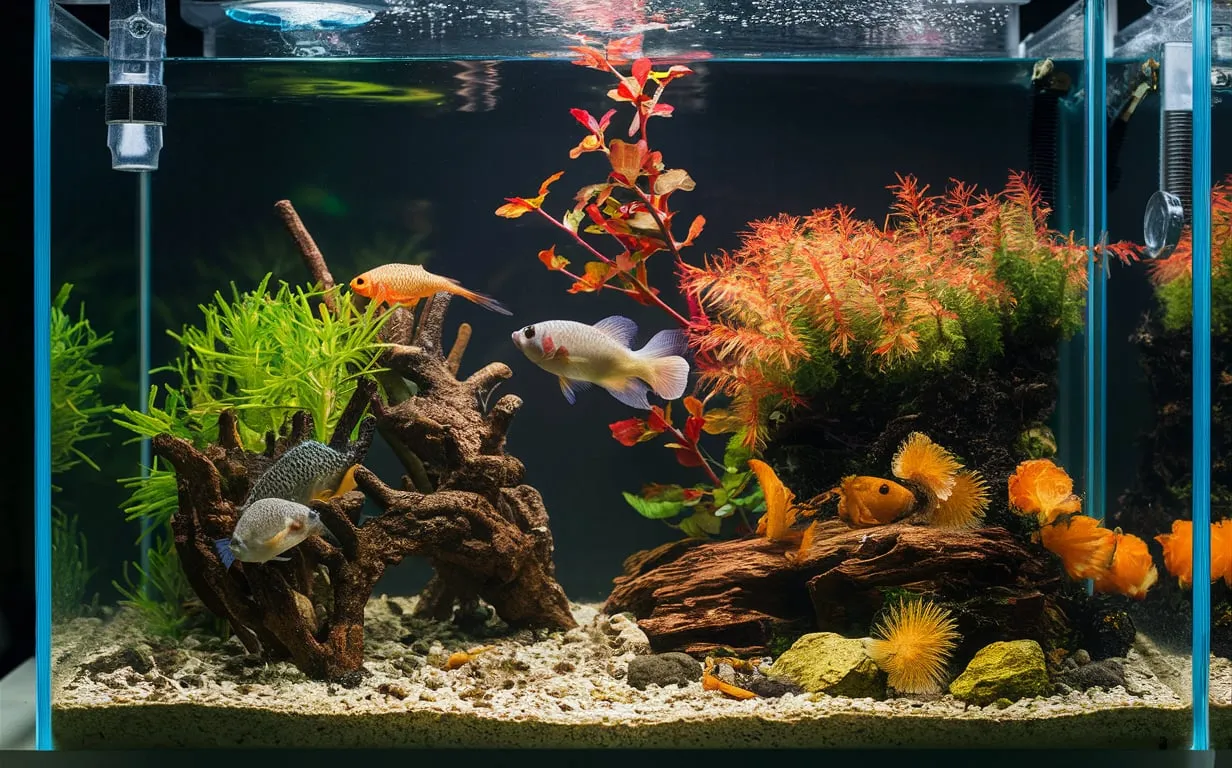When setting up a new fish tank, the choices of what to include can be overwhelming. From decorations to water parameters, every element plays a crucial role in creating a healthy and vibrant aquatic environment for your finned friends. In this comprehensive guide, Betta Fish will explore the must-have items and best practices to transform your fish tank into a thriving underwater ecosystem.
Choosing the Right Tank Size and Type
The size and type of fish tank you select will depend on the number and size of fish you plan to keep, as well as the available space in your home. As a general rule, aim for a tank that can accommodate the full-grown size of your fish species. For small to medium-sized fish, a 10-20 gallon tank is often a suitable starting point. Larger fish, such as cichlids or goldfish, may require a 30-gallon or larger tank.

Things To Put In A Fish Tank
Filtration System
A reliable filtration system is the backbone of any successful aquarium. Mechanical, biological, and chemical filtration work together to remove waste, maintain water quality, and provide a healthy environment for your fish. Canister filters, hang-on-back filters, and internal power filters are all popular options.
Lighting
Proper lighting is crucial for the health and wellbeing of your aquatic plants and fish. LED lighting systems offer energy-efficiency, customizable brightness, and a range of color temperatures to mimic natural daylight.
Substrate
The type of substrate you choose for the bottom of your tank can greatly impact the overall aesthetic and functionality of your aquarium. Gravel, sand, and planted substrate are all common options, each with their own advantages.
Decorations and Hiding Spots
Incorporating decorations and hiding spots, such as driftwood, rocks, and artificial plants, not only enhances the visual appeal of your tank but also provides valuable cover and enrichment for your fish.
Maintaining Water Quality
Keeping the water quality in your tank at optimal levels is essential for the long-term health of your fish. Regular water testing, partial water changes, and monitoring of parameters like pH, ammonia, nitrites, and nitrates will help ensure a stable and thriving aquatic environment.
Stocking Your Tank Wisely
Choosing the right fish species and properly stocking your tank is crucial to maintain a balanced ecosystem. Consider the adult size, compatibility, and schooling behavior of the fish you select to create a harmonious community.
How Often Should I Perform Water Changes In My Fish Tank?
The frequency of water changes for a fish tank depends on several factors, such as the size of the tank, the number and type of fish, the filtration system, and the feeding schedule. However, here are some general guidelines for how often to perform water changes:
- For a lightly stocked aquarium (1-2 inches of fish per gallon of water), changes 25-50% of the water once a week.
- For a moderately stocked aquarium, changes 25-50% of the water 2-3 times per week.
- For a heavily stocked aquarium, changes 25-50% of the water 3-4 times per week.
- In general, smaller aquariums (under 20 gallons) will need more frequent water changes than larger aquariums.
- During the initial cycling period of a new tank, more frequent (up to 50%) water changes may be needed until the nitrogen cycle is established.
- If you notice a buildup of waste, excess algae growth, or other water quality issues, increase the frequency and/or volume of your water changes.
The key is to monitor the water parameters (ammonia, nitrites, nitrates, pH) and perform water changes as needed to maintain good water quality for your fish. Doing partial water changes regularly is better than doing infrequent large water changes.
How Can I Tell If My Tank Is Overstocked With ish?
There are a few signs that can indicate an overstocked fish tank:
Excessive waste buildup:
- Rapid accumulation of nitrates, ammonia, or other waste products in the water
- Visible debris, uneaten food, or excessive algae growth
Behavioral changes in fish:
- Fish swimming erratically or near the surface wasting for air
- Increased aggression or fin nipping between fish
- Fish hiding or staying in one area of the tank
Stunted growth:
- Fish not growing at the expected rate
- Smaller overall size compared to same species in properly stocked tanks
High mortality rate:
- Unexplained or frequent fish deaths
- Susceptibility to disease outbreaks
Declining water quality:
- Frequent need for water changes to maintain acceptable parameters
- Difficulty maintaining stable pH, temperature, and other water chemistry
To determine if your tank is overstocked, consider the following guidelines:
- Stick to the general rule of 1 inch of adult fish per gallon of water.
- Research the specific space and bioload requirements for the fish species you have.
- Use an online aquarium stocking calculator to estimate the appropriate number of fish.
- Monitor your water quality parameters closely and make adjustments as needed.
If you notice any of the signs of overstocking, reduce the fish load by removing some fish or upgrading to a larger tank. Maintaining proper storage levels is crucial for the health and well-being of your aquarium inhabitants.
Conclusion
By understanding the essential components of setting up a fish tank and implementing best practices for maintaining water quality and stocking, you can create a vibrant and rewarding aquatic environment for your beloved fish. Remember, patience and attention to detail are key to establishing a thriving underwater oasis in your home.

Related Posts
Female Betta Care: A Comprehensive Guide
Understanding Betta Fish Water
What Are Clamped Fins On Betta?